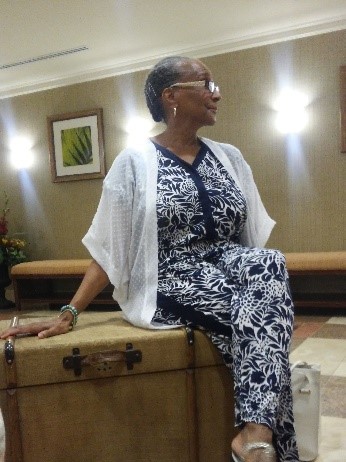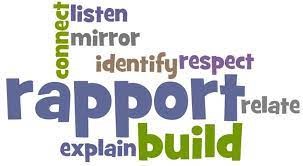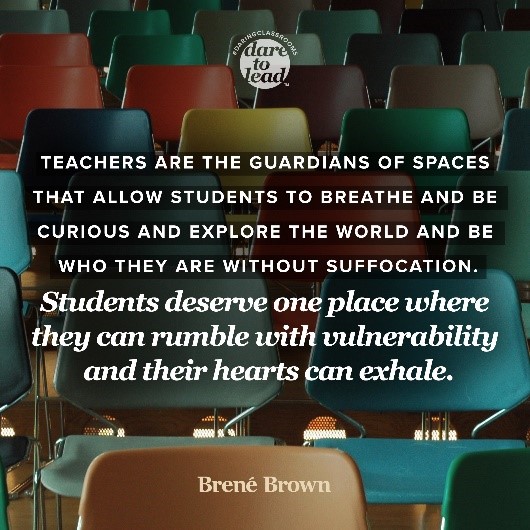Some Departing Thoughts: On the Privilege and Responsibility of Inclusive Teaching
 By Professor Tuere Marshall, Professor of English, retired
By Professor Tuere Marshall, Professor of English, retired
As I retire this summer from my faculty position in the English department, reflections on my teaching career are flooding in. The seed for teaching was first planted during those twelve years of my early education when my teachers up through high school were nuns of the Dominican order (and I thought I had to be one in order to teach – dodged that bullet); however, in college I met professors who were teacher/mentors, who began defining the kind of professor I wanted to model.
Learning from our students
My model for teaching was redefined many times prior to MC when students of all races, ages, genders, and economic backgrounds came into my classes. First, at the University of the District of Columbia (UDC), that student body added another demographic – prepared and underprepared. I encountered students who were frustrated because they could read the words on the page but lacked reading comprehension skills. I learned why when one such student, whom I will call Anne, came into my office and explained. She said, “I’m very confused. My grandmother taught me to read, but I don’t understand what I’m reading.” The very fact that her “grandmother” was her primary guardian was a subtle hint into the wrap around support available for her. The families of many of our students have great expectations and offer moral support but lack the intergenerational experience of parents who have been to college. What Anne, for example, may have lacked in reading comprehension and grammatical correctness, she possessed in a level of intelligence that enabled her to communicate with an adult (her professor) and obtain the support she needed.
Anne taught me two important lessons that influenced my teaching. The first lesson was that many students entering our classrooms have had limited interactions with adults and others outside of their peer group, family, or community. Being adult authority figures who are invested in their success is a privilege and a responsibility for us, for often we are the first professionals outside of their community who they may be able to trust. Other than the valuable support of their family members, many of our students haven’t had other adults take interest and invest in them deeply. Given our experiences and expertise, our work as faculty includes helping students build their path through college, helping to bridge the gap for first-generation college students through our relationships with them. As our task is to prepare students for the future, why not embed healthy intergenerational communication practices in our safe and trustworthy environments?

The second lesson Anne taught me was that “underprepared” students, those with academic gaps, are not undertalented. In order to succeed, Anne knew she had to come into my office and advocate for herself. This demonstration of maturity and commitment to learning is described in Robert Ster
nberg’s theory of successful intelligence (Sternberg & Grigorengo, 2007). He asserts that students with conventional intelligence are able to bank and memorize facts, figures, and formulas; whereas, students with successful intelligence may have academic gaps, but have analytical, creative, and practical thinking (common sense) skills enabling them to maneuver life’s obstacles and succeed. Sternberg’s theory as a predictor of student success goes beyond GPA and is grounded in the belief that learning takes place when the individual is present, fully engaged, and cognitively mature. Anne’s self-advocacy also calls to mind William Perry’s theory of ethical and intellectual development. In Perry’s nine-step scheme of cognitive development, the student must transition from “thinking to meta-thinking, from man as knower to man as critic of one’s own thinking” for academic achievement to occur (Perry, 1999). Anne’s success, and student success overall, depends on the curriculum incorporating features that encourage and nurture personal commitment to a growth mindset (Dweck, 2016).
The next learning curve in my teaching career came at the University of New Hampshire (UNH), which was a totally different student (and faculty) demographic. As a Washingtonian and an African American professor teaching students from New England who did not share my culture or ethnicity, the experience once again reshaped my pedagogy. The literary metaphors and the American authors like Baldwin or Ellison did not connect with the UNH student. One student actually reported me for teaching too many Black authors. I guess two was too many. As professors have academic freedom on our side, I didn’t discontinue those authors. Instead, I presented them within a broader platform, found readings indigenous to New England, and solicited topics of interest from my students. Deferring to students for topics of interest prompted my practice of leveling the playing field and shifting the center of power from the one authority figure standing in front of the class to allowing and empowering students to share the center.
By the time I arrived at MC, the jazzy combo of strict grammatical correctness, teaching literature to teach history, and investing in my students’ future was more refined. When students enter (community) college, the question becomes what pedagogical design will reap the best results? After teaching at different universities, UDC, UNH, Howard University and Bowie State, I learned how to “read the crowd” and to build rapport with my MC students. Building rapport has been one of my most important keys to student trust and, ultimately, success. Borrowing an idea from Vincent Tinto’s theory of persistence, students have to perceive that I am/we are invested in their success; they also have to perceive the information they are receiving in the classroom is relevant to what they are doing both now and in the future (Tinto, 2016, 2017). If 21st century educators are going to be relevant, it’s imperative to make “disruptive innovations,” shift the status quo, and allow the student to guide pedagogy. Most semesters, even before I met my students, I had my syllabus meticulously prepared, my activities planned and the timeline of deadlines written in cement.
In my classrooms, the first challenge was to know the students and their future goals. Why are they here? What are their five-year goals? Second, the center of authority was deconstructed to create a more level playing field for this “community” of learners. I wanted the students (i.e., writers) to feel their input was respected, as well as an essential contribution to the classroom dynamic. In this way, students have an opportunity to more fully practice being responsible for their learning. Next, teaching must be done in the culture of our learners: flipped classrooms, blended learning, and MOOCs, for example. We need to be open to new ideas, technologies, and methods that fit with students today who are in need of increased flexibility and engagement. Finally, the traditional contract-style syllabus had to be modified, where possible, to include student negotiation and input.
Empowering our students
Enhancing the academic instruction to more fully empower the learner is a collaborative effort with professors across the disciplines. Sharing forward-thinking theories was eye-opening for me. Hopefully, this will rejuvenate faculty and transform the autonomous/individualized teaching norm into a community of educators concerned with successful outcomes for our 21st century students. So, flexibility, relevancy, and retention must be the center of our efforts. If students are not in class, the academic programs have no chance of fulfilling the mission of MC, which is to empower the student and enrich the community. Whether our students are in developmental, credit-bearing, or continuing education courses, their success ultimately supports the broader community. My responsibility was to support that broader level of success beyond their last day in class.
forward-thinking theories was eye-opening for me. Hopefully, this will rejuvenate faculty and transform the autonomous/individualized teaching norm into a community of educators concerned with successful outcomes for our 21st century students. So, flexibility, relevancy, and retention must be the center of our efforts. If students are not in class, the academic programs have no chance of fulfilling the mission of MC, which is to empower the student and enrich the community. Whether our students are in developmental, credit-bearing, or continuing education courses, their success ultimately supports the broader community. My responsibility was to support that broader level of success beyond their last day in class.
My responsibility to invest in students and ensure they are prepared to succeed beyond the classroom led to designing lessons where professor and student would more formally co-facilitate instruction. I quickly saw that co-facilitation enhances student engagement and creates a shared educational experience.
Part of that shared experience was empowering students to suggest themes and to teach each other. A peer-to-peer model has been one of my more successful tools, where students learned the material more fully in order to teach it. Peer-to-peer collaboration enabled them to be more actively engaged in research, writing, and debate. Of course, this required faculty time to guide, listen, and encourage a deeper or more scholarly examination of the issue. Instead of “off-the-top-of-the-head” ideas on global warming, for example, students and I brainstormed a debatable 5-year plan for EPA to mandate electric cars.
Equipping our students
During the past few years, we were faced with unforeseen societal challenges. Our international students feared immediate deportation the day after the November 2016 election, the pandemic-inspired virtual teaching shifted on a dime our normal ways of teaching and learning, and the current racial reckoning questioned our patriotism to the status quo. Once again, what kind of teacher I needed to be was redefined, which guided a sense of responsibility for more inclusive teaching. I found it necessary to create brave spaces empowering students to voice their opinions, to think/debate critical social issues, and then to defend (i.e., support) their positions with sound evidence and critical thinking. Now, I always incorporated formal debates in the curriculum; however, since 2016 it became a way to flesh out immediate issues, stresses, and uncertainties facing our students. I let them choose their own topics of interest. We debated political platforms, healthcare options, immigration policies, solar vs. conventional energy, vegan/non-vegan diets, drinking age (of course lowering it), pet adoptions vs. buying new, standardized testing, tuition-free college, social media, gun-control, euthanasia, marijuana (always a choice), incarceration vs. restorative justice, and even El-Chapo’s wife.
We tackled the “difficult” elephants in the room: racial and social justice issues, which included police brutality, death penalty, Palestine/Israeli conflict, incarceration/restorative justice, prison reform, and defunding or re-imagining the police force. My students were passionate, informed, and eager to flesh out their ideas. Two of my more memorable pro/con debate claims were: (1) Anti-Semitic attacks should receive equal attention as given to the Black Lives Matter movement. (2) The majority sentencing of hate crimes is due to the biases of judges and lawyers. Trust me, our students are equipped to handle the difficult discussions (with guidance, of course).
The question now becomes whether we are willing to admit that the tried-and-true methods may not fully support the 21st century students. Students co-facilitating instead of always listening to lectures shifts the center of authority and builds a sense of community. As our common ground is raising the skill levels of our students, we are committed to supporting their transition into positions of leadership and productive members of society. Allowing them to present, run lessons, and hold controversial debates works by building community, being authentic, and giving them a feeling of significance.
It was important for me to be transparent with my intentions and expectations. My (not so) hidden agenda was to connect with and support each student, to make sure they understand the value education affords, to think critically about social issues, and to empower them to find their voices. If we, including staff, faculty and administrators, don’t create the safe learning environment for them, then who will?
If we abandon our children our gangs will adopt them;
our drug dealers will hire them;
our prisons will house them;
and our criminals will educate them.
Renewing our commitment
The above anonymous cautionary tale reflects a reality across our country that must not happen on our watch. MC has been the “go-to” higher-education institution for enrollees who are from diverse backgrounds, including those where gangs, prisons, and drugs are prevalent. However, even these students come ready to achieve their dreams. All college systems – administrative services, academic programs, student services, and offices of the president – must work in tandem to recognize and ease any challenge our learners are facing. Even though our learners come with imperfect placement tests, financial constraints, discriminatory attitudes, and academic gaps, they are here. My students left me with a desire to continue addressing social challenges on my next platform.
Teaching at MC has been an amazing journey to support our youth. What a privilege and, yes, a responsibility. I urge the faculty and MC community to continue their efforts to empower our students. The goal is to produce contributing members of society; the goal is to produce critical thinkers; the goal is the American Dream. Our students deserve it, and our future depends on it.
Resources for Consideration
- Raoul Peck’s “Exterminate All the Brutes” an HBO mini-series
- Richard Wright’s re-released novel, The Man Who Lived Underground, (without censor)
- James W. Loewen’s Lies My Teacher Told Me: Everything Your American History Textbook Got Wrong
- Brave spaces: https://www.naspa.org/images/uploads/main/Policy_and_Practice_No_2_Safe_Brave_Spaces.pdf
- bell hooks: Teaching to Transgress: Education as the Practice of Freedom
- Mary Rose O’Reilley: The Peaceable Classroom
Tuere Anne Marshall brought thirty years of administrative experience into academe and has been a professor of English for twenty-one years. Fifteen of those years were at Montgomery College, until retirement in July 2021. Her passion is advocacy for youth empowerment through literacy. In retirement, she will continue to support learners from the G.E.D. to the Ph.D., while enjoying her golden years traveling and engaging in many other pursuits of interest.
References
Dweck, C. (2016, January 13). What having a “growth mindset” actually means. Harvard Business Review. https://hbr.org/2016/01/what-having-a-growth-mindset-actually-means.
Perry, W. G. (1999). Forms of ethical and intellectual development in the
college years: A scheme. Jossey-Bass.
Sternberg, R. J. & Grigorenko E. (2007). Teaching for successful intelligence to
increase student learning and achievement: To increase student learning and achievement. Corwin.
Tinto, V. (2016, September 16). From Retention to persistence. Inside Higher Education.
https://www.insidehighered.com/views/2016/09/26/how-improve-student-persistence-and-completion-essay
Tinto, V. (2017). Reflections on student persistence. Student Success, 8(2), 1-8.
https://doi.org/10.5204/ssj.v8i2.376



Bravo! Ms. Marshall’s farewell column expertly combines memories with a call to action all professors would do well to heed. At a time when a pandemic is ravaging the pool of potential students–particularly the underprepared and economically challenged ones–to question the very need for a college education, Ms. Marshall reminds her colleagues that the mission of higher education must exceed the “my classroom” mindset too often displayed by professors. Students need the ability to speak, writing, interact, and collaborate across a myriad of cultures, environments, and situations. As a writing instructor, Ms. Marshall makes the case for inventive and innovative ways to develop students whose writing can penetrate the echo chambers that threaten the future of a free and open society. May Ms. Marshall’s colleagues in Montgomery College and beyond heed her warnings, pick up her mantel, and prepare their students to engage a “new normal” that already has reshaped society will continue to do so for many years to come.